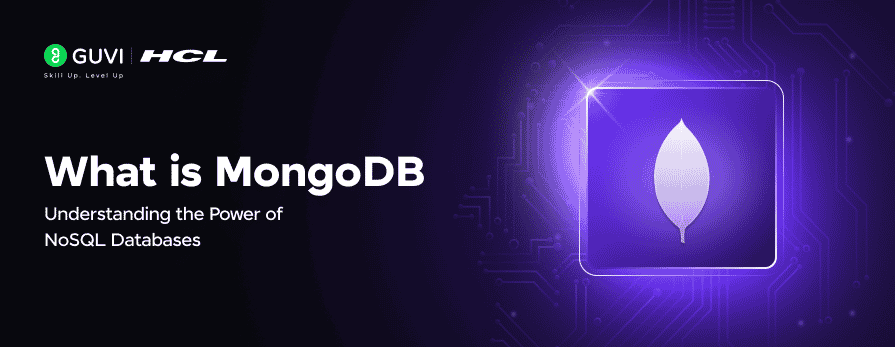
Mongo DB 101 : Understanding the Power of NoSQL Databases
Oct 22, 2025 4 Min Read 2210 Views
(Last Updated)
Table of contents
- Introduction
- What is Mongo DB?
- Key Features
- Core Concepts of Mongo DB
- Benefits and Use Cases
- Benefits
- Use Cases
- MongoDB Installation
- Popular MongoDB Tools and Ecosystem
- What are databases?
- CRUD
- Types of databases
- Conclusion
- FAQs
- Q1. What is the difference between MongoDB and traditional relational databases?
- Q2. Is MongoDB suitable for small applications or only large-scale projects?
- Q3. What programming languages can I use with MongoDB?
- Q4. How does MongoDB handle data consistency?
- Q5. Can MongoDB be used for real-time applications?
Introduction
Imagine building an app that needs to handle thousands of requests per second on diverse types of data, sounds like a challenging task, right? Well, that’s where Mongo DB comes in. Whether you’re developing a mobile app, an e-commerce platform, or big data applications, Mongo DB is designed to make your life easier.
In this blog, you will understand what databases are, their types, core concepts, and features in Mongo DB, its benefits, use cases, and popular tools for Mongo DB. So, if you’re curious about what makes Mongo DB one of the best NoSQL databases, you’ve come to the right place. Let’s dive in!
What is Mongo DB?
Mongo DB is an open-source, NoSQL database that stores data in JSON documents for flexibility rather than traditional tables used by relational databases. It is designed to handle huge volumes of unstructured or semi-structured data, making it a great choice for modern applications. It is a purely document-oriented model, where each record has various fields, types, and values.
Key Features
- Mongo DB is flexible and adaptable, you don’t need a predefined schema for storing the data.
- It supports horizontal scaling that can handle huge data by distributing the load across multiple servers.
- It uses APIs and a rich query language to get the data from the databases.
Now that we have seen the definition of Mongo DB and its key features, in the next section, we will look into the core concepts of Mongo DB.
Core Concepts of Mongo DB
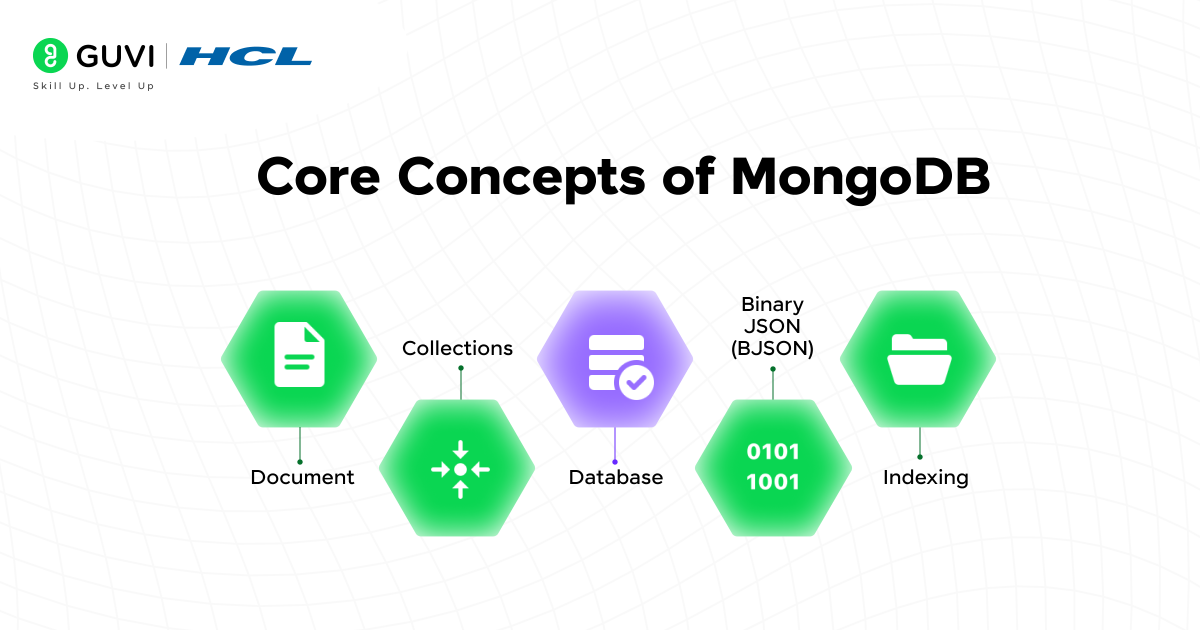
If you are a beginner in Mongo DB, then you must know these core concepts to use it correctly and efficiently. Mongo DB’s architecture revolves around several core concepts that make it more flexible, scalable, and easy to use. Some of them are:
- Document
In Mongo DB, the data is stored as documents, which are in JSON object format with key and value pairs. A document can contain various data types, such as arrays and nested objects.
Example
| { “_id”: 1, “name”: “Roopa Dharshini”, “age”: 21, “address”: { “street”: “23 Main St”, “city”: “Chennai” } } |
- Collections
Documents are stored in collections. A collection is similar to tables in relational databases. As we discussed earlier, it doesn’t require any predefined schema; a set of documents can be stored in the collection for easier extraction and use.
- Database
Mongo DB organizes the collection into a database. In other words, databases are the containers for collections. Each Mongo DB server can host multiple databases.
- Binary JSON (BJSON)
MongoDB stores the data in Binary JavaScript Object Oriented Notation (BJSON) format. It is similar to JSON with additional support to data types such as date and binary data, making it more efficient for storage and retrieval.
- Indexing
Unlike structured databases, MongoDB uses indexing methods for faster search operations. Indexes are created on one or more fields, improving query performance for larger datasets.
If you are a person interested in learning more about MongoDB with examples and who loves to learn by reading, you can use HCL Guvi’s FREE E-book on MongoDB for Beginners. This e-book explains the core features of MongoDB in detail with examples of each.
Benefits and Use Cases
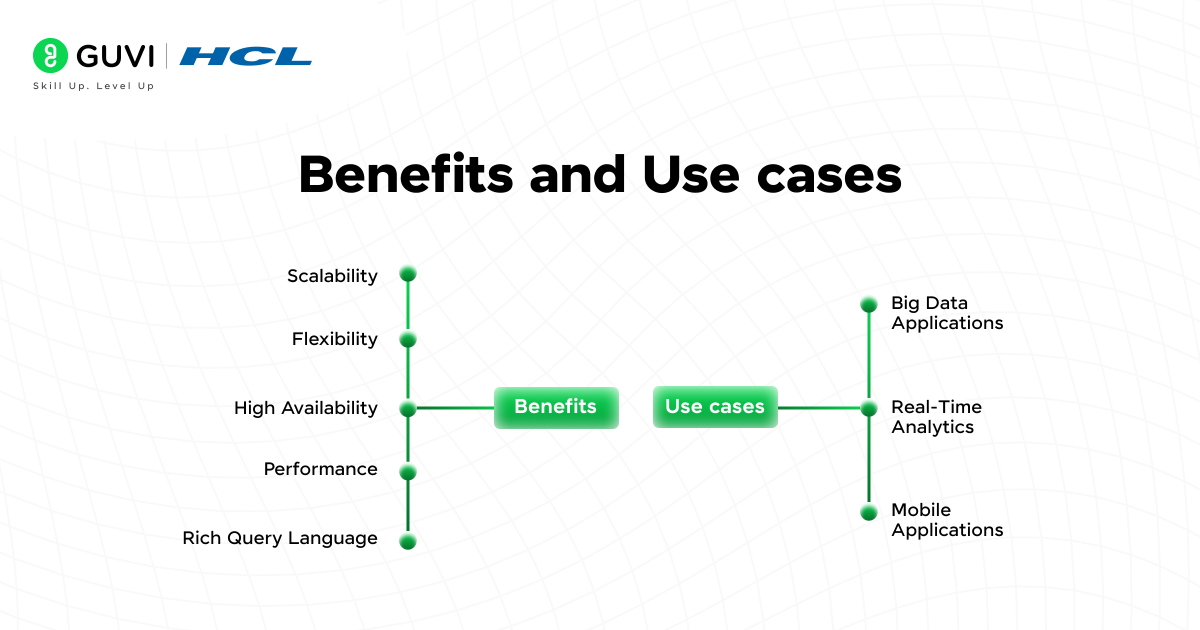
MongoDB has several benefits over traditional SQL databases, making it the best choice for many developers. Let’s look at some of the MongoDB benefits and use cases.
Benefits
- Scalability: It supports horizontal scaling through sharding
- Flexibility: It has a schema-less design, making it more flexible
- High Availability: It ensures high availability with the replication feature
- Performance: The indexing feature allows for high performance in handling large datasets
- Rich Query Language: It supports a wide range of operations like filtering, sorting, and aggregation
Use Cases
- Big Data Applications: MongoDB is well-suited for managing large volumes of unstructured data, which makes it an ideal fit for big data applications.
- Real-Time Analytics: MongoDB easily processes large amounts of data quickly, that are suitable for real-time analytical applications.
- Mobile Applications: MongoDB’s ability for low-latency operations makes it perfect for mobile applications with dynamic data storage needs.
These are some of the benefits and use cases of MongoDB. In the next section, we will look into the popular MongoDB tools and ecosystem.
MongoDB Installation
Before starting with MongoDB, you need to install the necessary tools and MongoDB. You can download any one of the tools (either MongoDB Compass or MongoDB CLI) from their official website. According to your operating system and its version, the installation may differ. Similar to all the installation processes, you need to double-click the installer once it’s downloaded. After installation, open the tool and get started by creating your first database. If you found any difficulty in installing MongoDB tools, you can check out our detailed guide on MongoDB installation.
Popular MongoDB Tools and Ecosystem
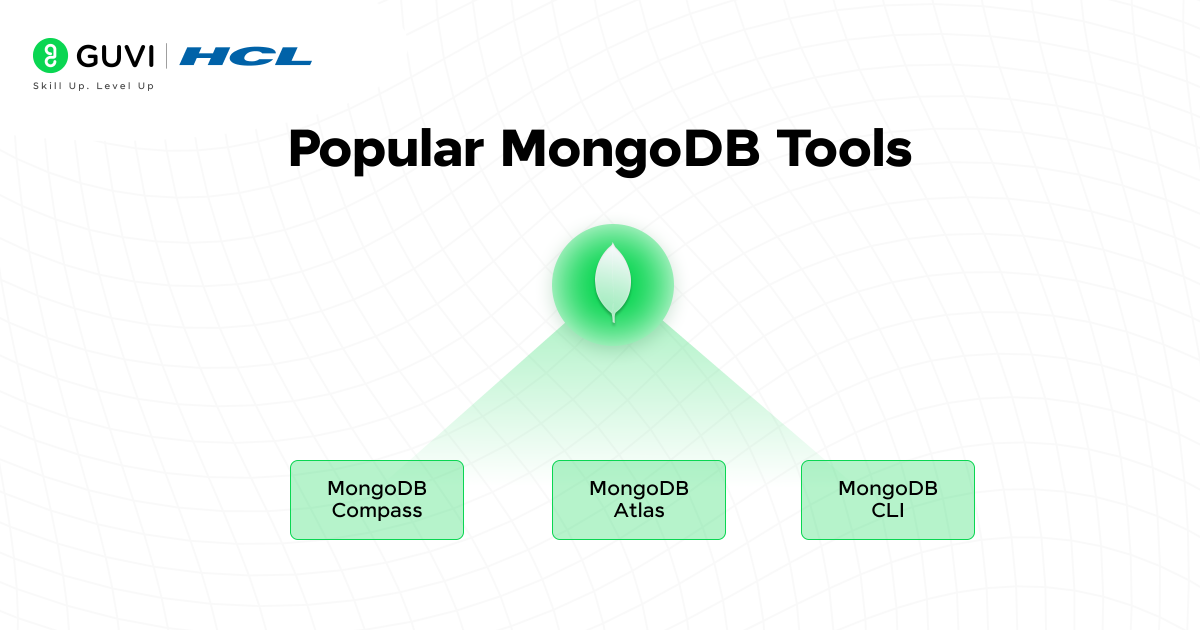
MongoDB’s ecosystem includes several tools that help developers to manage, visualize, and interact with their databases more efficiently. Here are some of the popular tools:
- MongoDB Compass: It is a graphical user interface (GUI) that allows developers to visualize, analyze, and manage databases without using code.
- MongoDB Atlas: It is a cloud-based platform that lets you host and manage MongoDB databases without setting up a local server.
- MongoDB CLI: A command-line tool for advanced users who prefer to interact with MongoDB through commands and scripts.
Start your journey in MongoDB with HCL Guvi’s Mastering MongoDB course, which teaches you from the basics to the advanced. You will gain industry-recognized certifications and enhance your skills to become a MERN stack developer.
What are databases?
A database is a structured collection of data that is stored electronically. It can store data in the form of numbers, texts, images, videos, and other types of data. Databases serve as a backbone to most of the modern applications, from e-commerce to social networking platforms, and also in enterprise applications.
CRUD
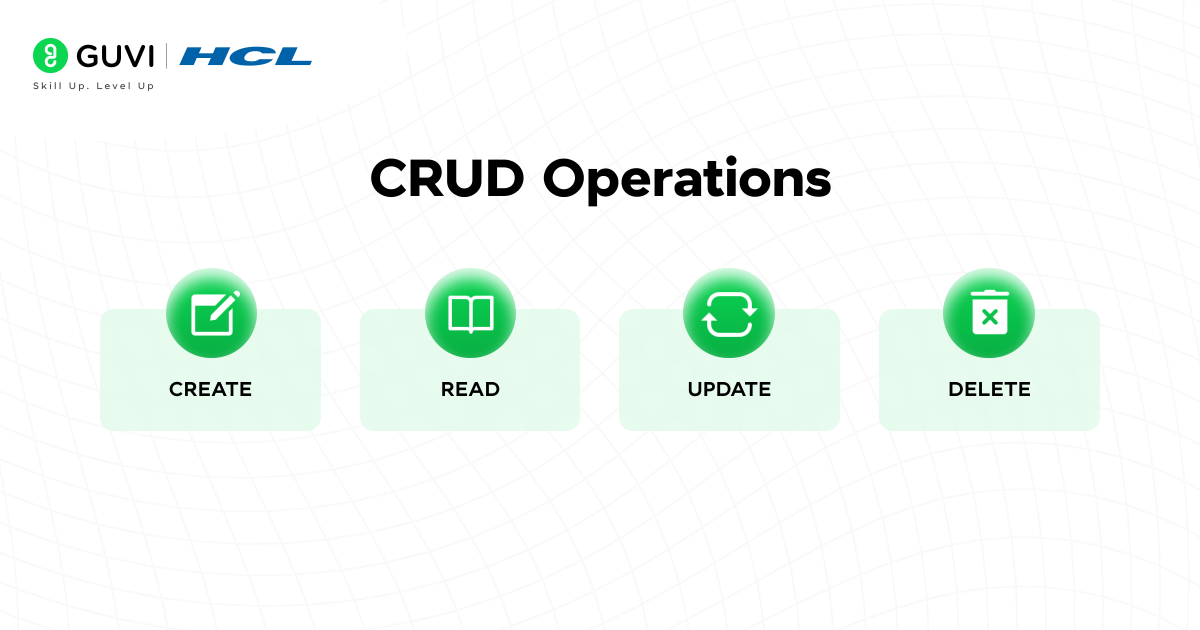
Databases are crucial because they help in storing data in a consistent and organized manner to ensure data integrity. It also helps in performing various operations on data, querying and processing. Some of the most common operations are:
- CREATE: Insert a new record/data into the database.
- READ: Retrieves data from the database based on queries.
- UPDATE: Modifies existing data in the database by changing required fields.
- DELETE: Removes the data from the database.
Types of databases
Databases are categorized into many types based on their structure and functionality. But, there are two main types of databases: Relational and Non-Relational databases. Depending on the requirements, we can choose any one of the databases for our project. MongoDB falls under the Non-Relational database category of document-based databases, which we’ll dive deeper into in the next section.
| Feature | Relational Databases(SQL) | NoSQL |
| Definition | It stores data in structured tables. | It stores data in non-structured formats such as json, graphs. |
| Schema | It uses a predefined schema. | It uses a flexible schema. |
| Scalability | It uses horizontal scaling. | It uses vertical scaling. |
| Query language | Structured Query language(SQL) | No standard language. It uses APIs. |
| Examples | MySQL, PostgreSQL, Oracle. | MongoDB, Cassandra, Redis. |
Conclusion
In conclusion, MongoDB is a powerful NoSQL database that provides wonderful flexibility, scalability, and performance. By leveraging the JSON format to store the data, it allows developers to build applications that can handle large amounts of unstructured data efficiently. With the help of popular MongoDB tools, one can easily manage and visualize data. These are the reasons that make MongoDB the best choice for NoSQL databases.
FAQs
Q1. What is the difference between MongoDB and traditional relational databases?
MongoDB is a NoSQL database that stores data in JSON-like documents, whereas traditional relational databases use structured tables with rows and columns. MongoDB offers more flexibility with its schema-less design, making it better for handling unstructured or rapidly changing data.
Q2. Is MongoDB suitable for small applications or only large-scale projects?
MongoDB is versatile and can be used for both small and large-scale applications. Its flexibility, ease of use, and ability to scale make it ideal for projects of all sizes, from simple apps to large, data-intensive platforms.
Q3. What programming languages can I use with MongoDB?
MongoDB supports a wide range of programming languages, including JavaScript (via Node.js), Python, Java, C#, PHP, Ruby, and many more. Its compatibility with popular languages makes it easy to integrate into various tech stacks.
Q4. How does MongoDB handle data consistency?
MongoDB uses eventual consistency, meaning it prioritizes availability and partition tolerance over immediate consistency. However, it offers options like replica sets and write concern levels to manage consistency and fault tolerance based on your application’s needs.
Q5. Can MongoDB be used for real-time applications?
Yes, MongoDB is well-suited for real-time applications due to its high-performance architecture, fast read and write operations, and horizontal scalability. It’s commonly used in applications that require real-time data processing, such as messaging platforms, gaming backends, and live analytics dashboards.























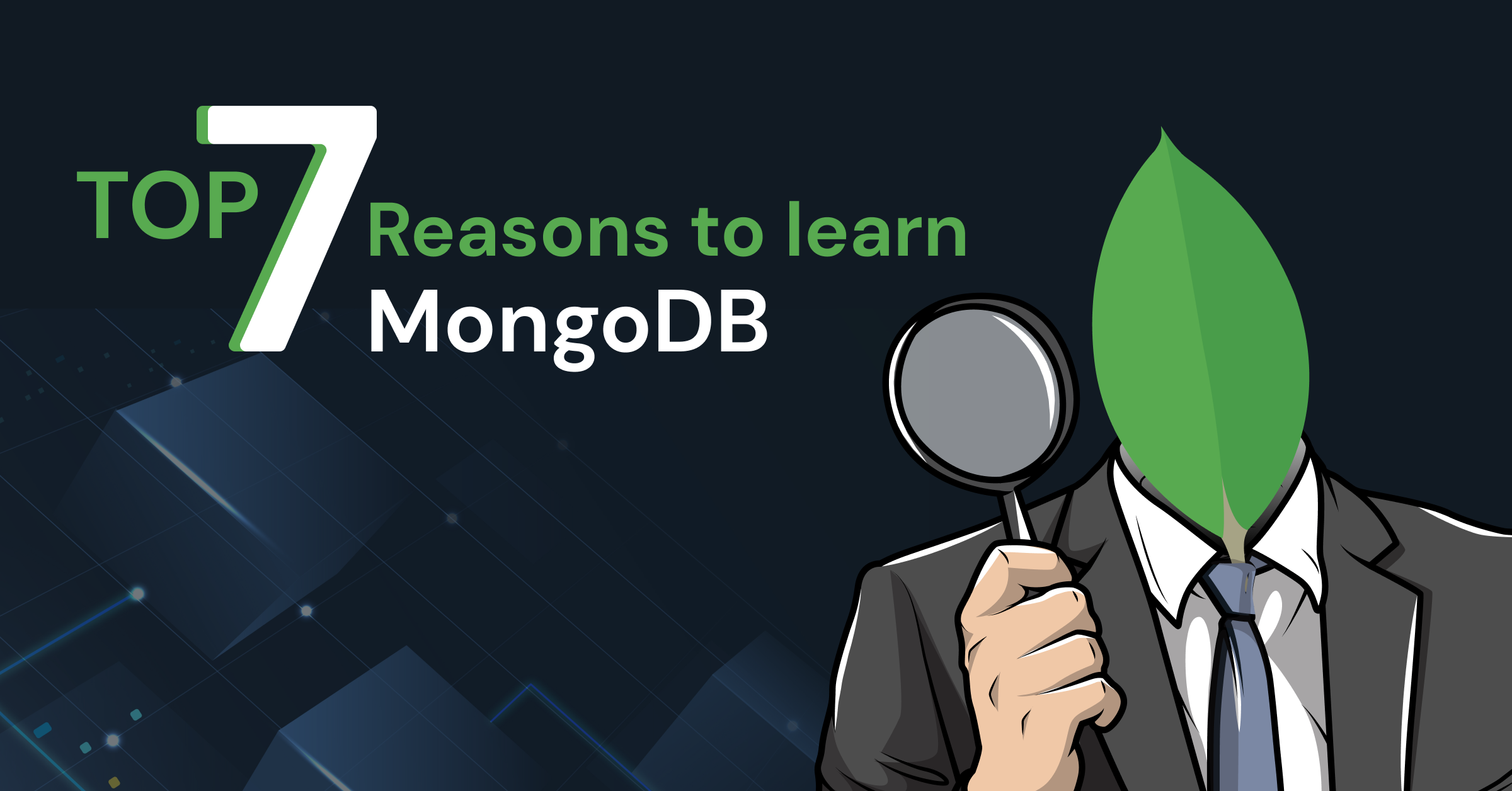


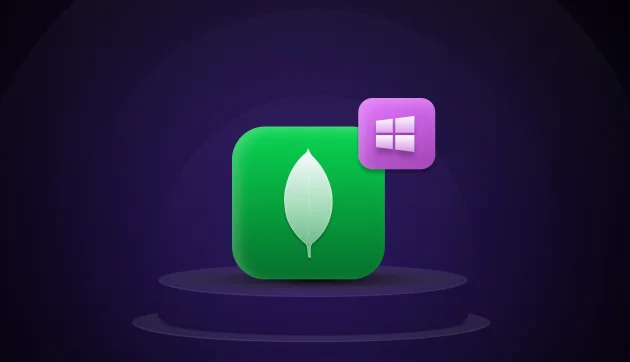
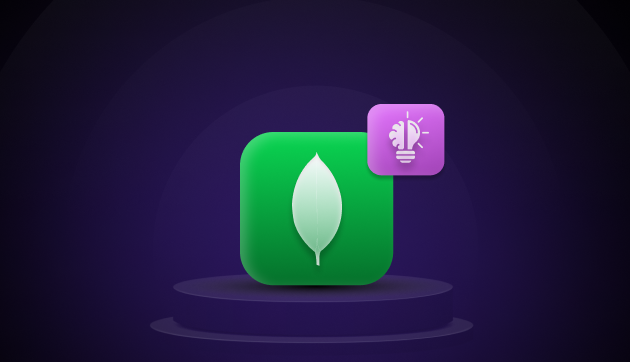





Did you enjoy this article?